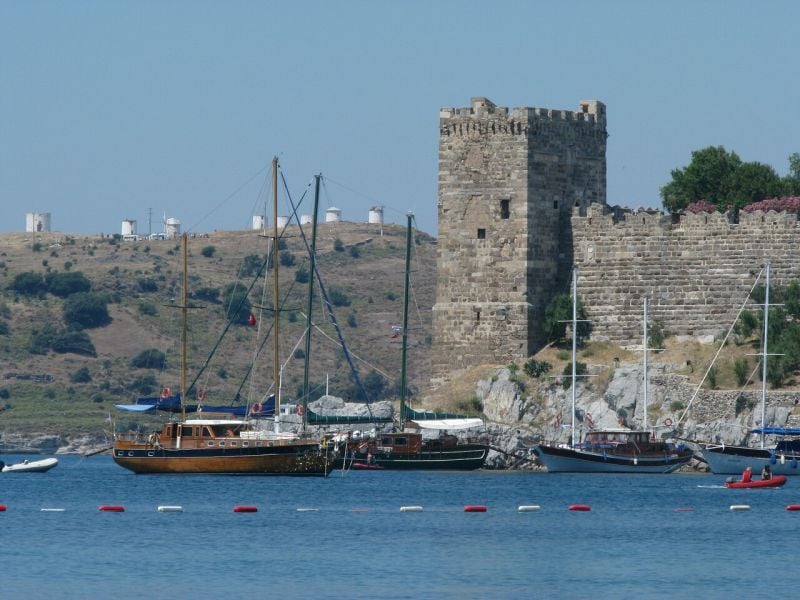Discover 6 hidden attractions, cool sights, and unusual things to do in Bodrum (Turkey). Don't miss out on these must-see attractions: Bodrum Castle, Antique Theatre, and Halicarnassus. Also, be sure to include Mausoleum of Halicarnassus in your itinerary.
Below, you can find the list of the most amazing places you should visit in Bodrum (Mugla).
Table of Contents
Bodrum Castle
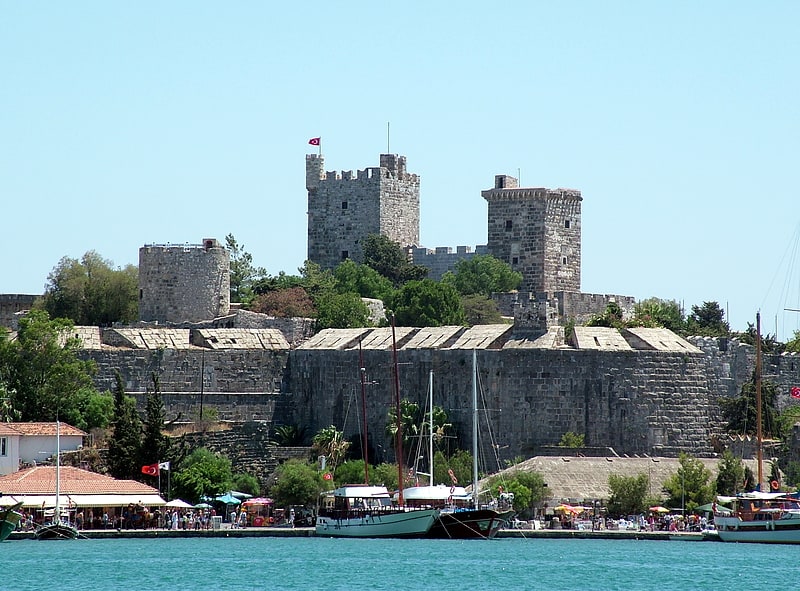
Also known as: Bodrum Kalesi
Fortification in Bodrum, Turkey. Bodrum Castle is a historical fortification located in southwest Turkey in the port city of Bodrum, built from 1402 onwards, by the Knights of St John as the Castle of St. Peter or Petronium. A transnational effort, it has four towers known as the English, French, German, and Italian towers, bearing the names of the nations responsible for their construction. The castle was completed in the late 15th century, only to be taken over by the Islamic Ottoman Empire in 1523. The chapel was converted to a mosque, and a minaret was added. The castle remained under the empire for almost 400 years. After remaining empty following World War I, in the early 1960s, the castle became the home for the award-winning Bodrum Museum of Underwater Archaeology. In 2016 it was inscribed in the Tentative list of World Heritage Sites in Turkey.[1]
Address: Çarşı Mh., 48400 Bodrum
Antique Theatre
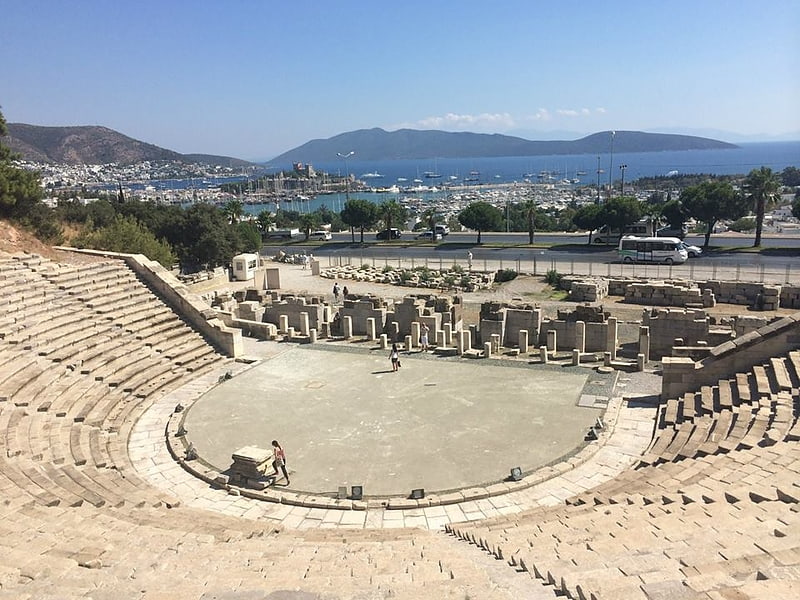
The Theatre at Halicarnassus, also known as Bodrum Antique Theatre, is a 4th-century BC Greco-Roman theatre located in Bodrum, Turkey. The theatre is considered to be built in a similar style to Ancient Theatre of Epidaurus.[2]
Halicarnassus

Also known as: Halikarnas
City. Halicarnassus was an ancient Greek city in Caria, in Anatolia. It was located in southwest Caria, on an advantageous site on the Gulf of Gökova, which is now in Bodrum, Turkey. The city was famous for the Mausoleum of Halicarnassus, also known simply as the Tomb of Mausolus, whose name provided the origin of the word "mausoleum". The mausoleum, built from 353 to 350 BC, ranked as one of the seven wonders of the ancient world.
Halicarnassus' history was special on two interlinked issues. Halicarnassus retained a monarchical system of government at a time when most other Greek city states had long since rid themselves of their kings. And secondly, while their Ionian neighbours rebelled against Persian rule, Halicarnassus remained loyal to the Persians and formed part of the Persian Empire until Alexander the Great captured it at the siege of Halicarnassus in 333 BC.
Zephyria was the original name of the settlement, and the present site of the great Castle of St. Peter built by the Knights of Rhodes in 1404 AD. It was built on what was originally an island, which gradually expanded to include several Carian settlements on the mainland. However, in the course of time, the island topographically united with the mainland, and the city was extended to combine with the existing Salmacis, an older town of the native Leleges and Carians, and site of the later citadel. The first settlers were originally Dorians from the Peloponnese, but this was soon forgotten.[3]
Mausoleum of Halicarnassus
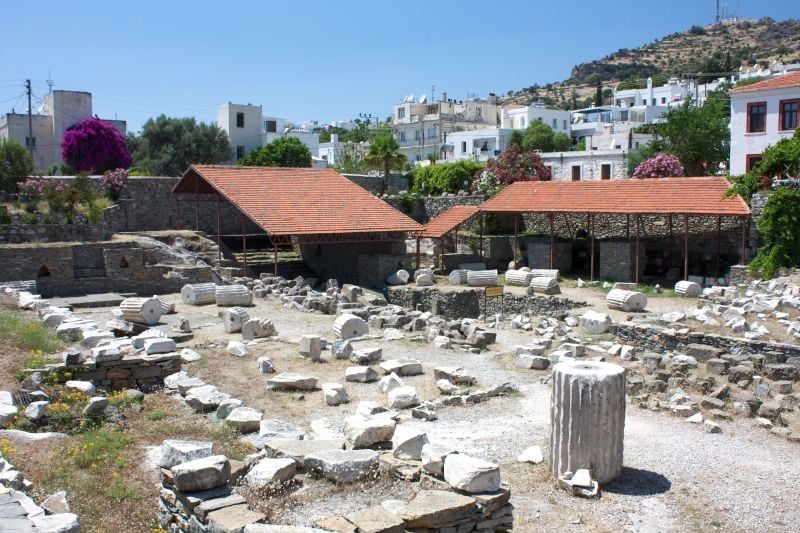
Mausoleum in Bodrum, Turkey. The Mausoleum at Halicarnassus or Tomb of Mausolus was a tomb built between 353 and 350 BC in Halicarnassus for Mausolus, a native Anatolian from Caria and a satrap in the Achaemenid Empire, and his sister-wife Artemisia II of Caria. The structure was designed by the Greek architects Satyros and Pythius of Priene. Its elevated tomb structure is derived from the tombs of neighbouring Lycia, a territory Mausolus had invaded and annexed circa 360 BC, such as the Nereid Monument.
The Mausoleum was approximately 45 m (148 ft) in height, and the four sides were adorned with sculptural reliefs, each created by one of four Greek sculptors: Leochares, Bryaxis, Scopas of Paros, and Timotheus. The mausoleum was considered to be such an aesthetic triumph that Antipater of Sidon identified it as one of his Seven Wonders of the Ancient World. It was destroyed by successive earthquakes from the 12th to the 15th century, the last surviving of the six destroyed wonders.
The word mausoleum has now come to be used generically for an above-ground tomb.[4]
Address: Tepecik Mahallesi, 48440 Bodrum
Newold CLUB
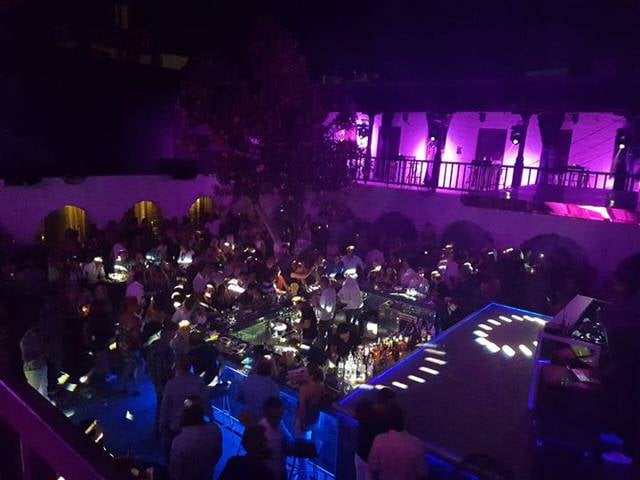
Museum, Bars and clubs, Nightlife, Night club, Music venue
Address: Kale Caddesi, Carsi Mahallesi, No:29, 48400 Bodrum City
French Tower
